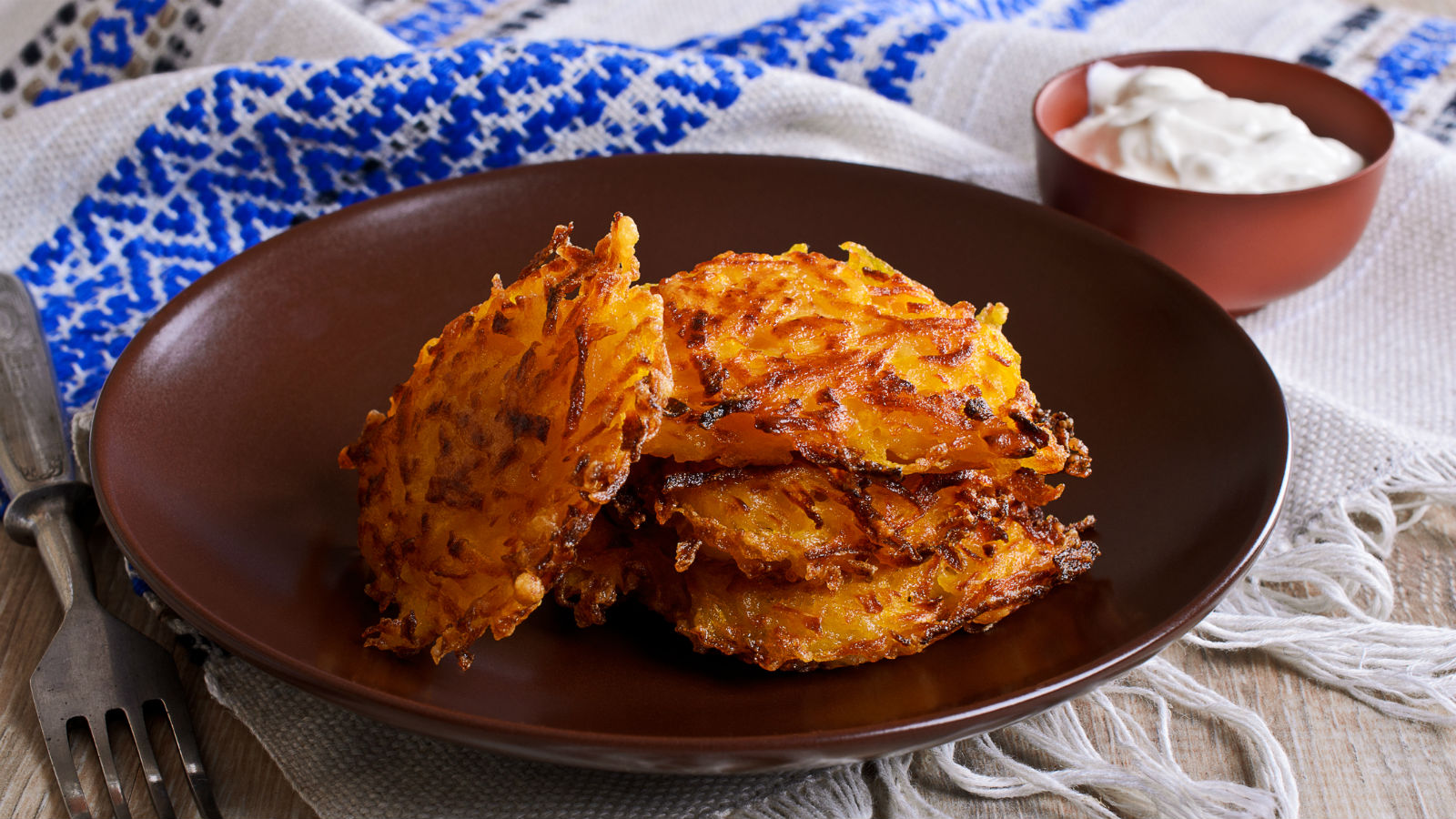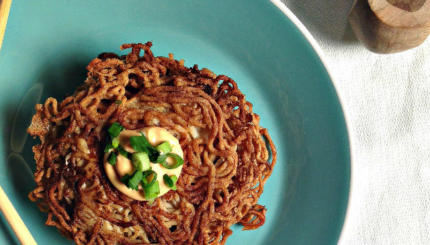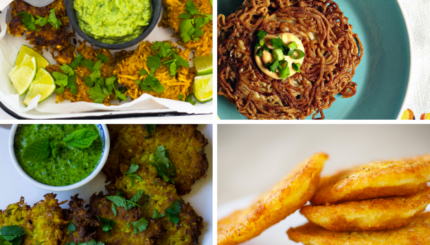A latke is the starchy fritter of shredded potato and onion you may know from New York-style deli menus (and of course competitive dreidel events), and is most widely associated with the celebration of Hanukkah.
Pronounced either lot-key or lot-kuh, the origin of the word is Yiddish and means something along the lines of “little oily thing.” Although it’s etymological and ritualistic narrative is rather long and windy, taking one through Russia, Greece, and Italy (there’s even cheese involved in its story), we can thank Ashkenazi Jews (Jews from Central and Eastern Europe) in particular for the latke we know today.
In addition to acting as a vehicle for religion-sponsored oil intake on Hanukkah, latkes have become a canvas for a variety of toppings, most commonly applesauce or sour cream, or both (Jews really like options). But almost anything you can think of has probably been paired with a latke; and sometimes even the traditional potato is swapped for another vegetable altogether.
I wouldn’t go as far as to say I’ve never had a bad latke (don’t be ridiculous, it’s not pizza), but at least the premise of hot fried starch is always attractive. It’s definitely a good way to add a few pounds in winter and save money on an expensive thick coat.
The Nosher celebrates the traditions and recipes that have brought Jews together for centuries. Donate today to keep The Nosher's stories and recipes accessible to all.
Here are a few latke recipes to try:
Indian-spiced cauliflower latkes
Coconut latkes with cranberry applesauce
Sweet potato latkes with toasted marshmallows
Love Jewish food? Sign up for our weekly Nosher recipe newsletter!
dreidel
Pronounced: DRAY-dul, Origin: Yiddish, a spinning top, with four sides, each marked with a different Hebrew letter (nun, gimel, hay and shin), it is played with on Hanukkah.

Help us keep Jewish knowledge accessible to millions of people around the world.
Your donation to My Jewish Learning fuels endless journeys of Jewish discovery. With your help, My Jewish Learning can continue to provide nonstop opportunities for learning, connection and growth.





